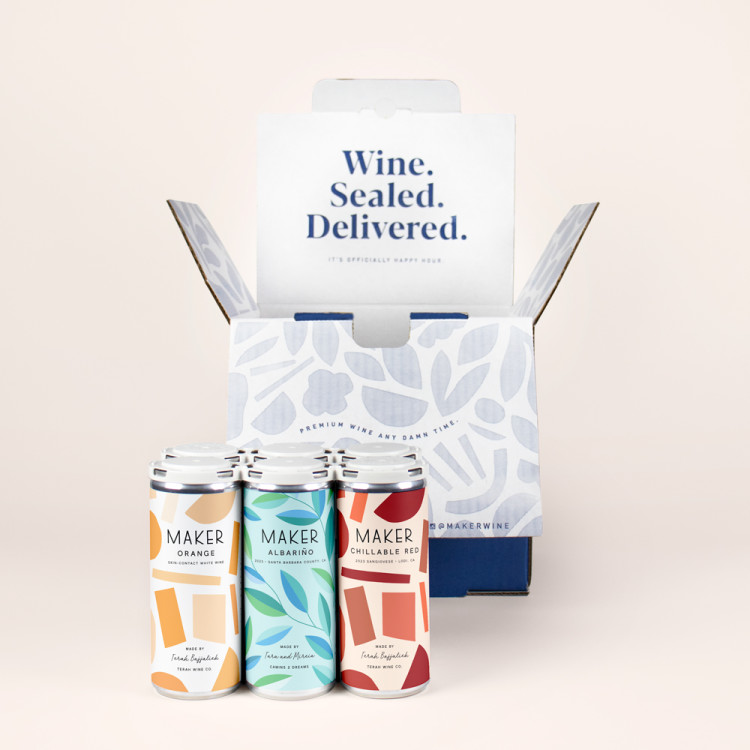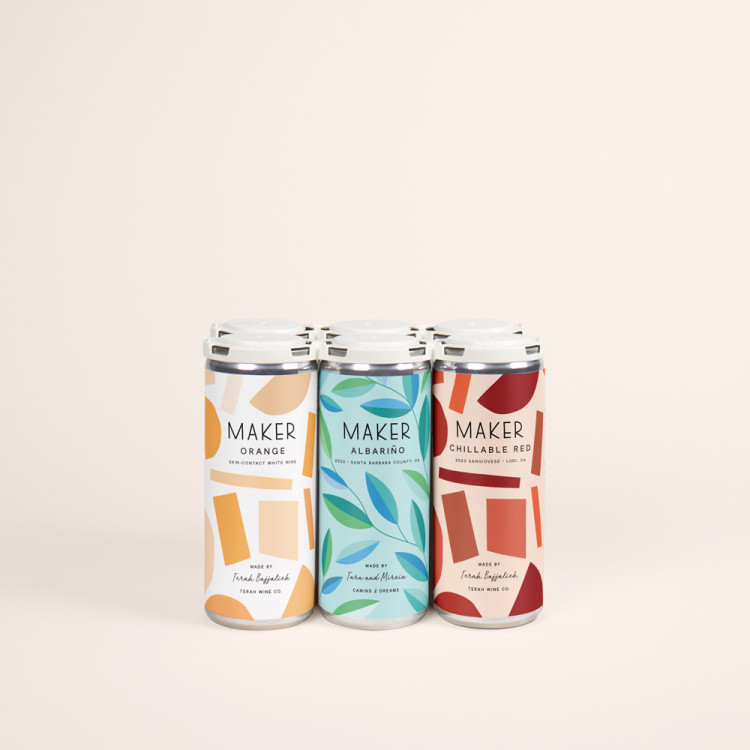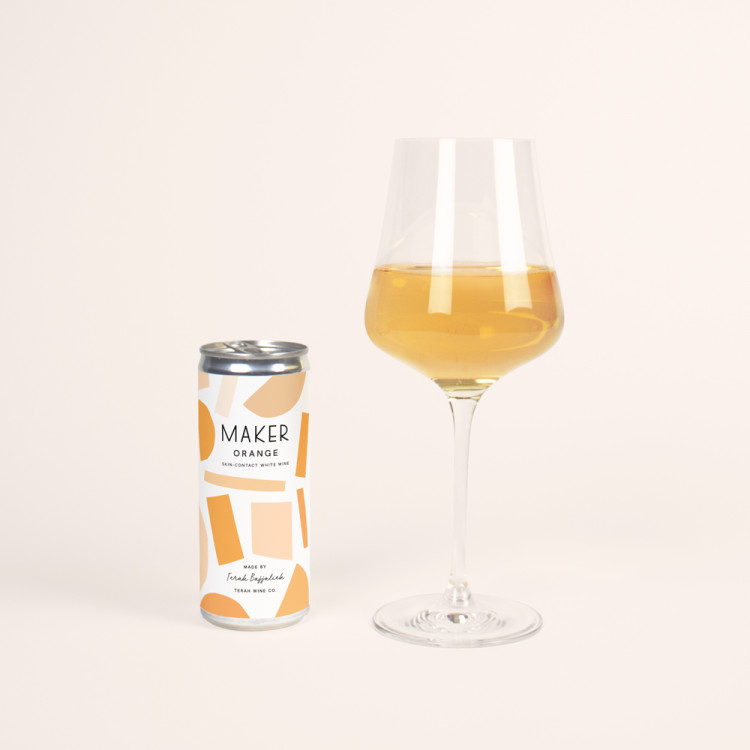Wine School
Natty Wine 101: What is Natural Wine?
We're diving deep into what makes natural wine so natty – in a good way. Learn how it's made and why you should try some.

By Maker Wine
December 11, 2024

If you’re into wine, food magazines, or dining out, you’ve probably heard more people talking about “natty” wine. And if not, you may be thinking it sounds a little too close to Natty Ice — potentially triggering college beer flashbacks of keg stands, sloppy dancing, cringey makeout sessions, or the unstoppable flow of drunken tears.
But don’t you fret. As fratty as it might sound, natty wine is just wine. One could actually argue it’s the most wine of all the wines. We’re here to give you the low-down on what is natural wine, how it’s made, and why you’ll love it.
What does “natty” in natty wine stand for?
The “natty” in natty wine is just slang for natural wine. There’s no official or universally accepted definition for natural wine, but people generally agree on a few important conceptual elements. If we’re asking the fancy guys at Oxford who also write the English Dictionary, they outline these key characteristics:
Grapes are typically grown by small-scale, independent producers.
Grapes are hand-picked from sustainable, organic, or biodynamic vineyards.
Wine is fermented with no added yeast (i.e. native yeasts).
No additives are included in fermentation (yeast nutrients, etc.).
Little or no sulfites are added.
Shop Maker's natural wines
Natural Wine Mixed Pack
Natural Red, Orange, and White Wines
Three #nofilter kind of wines from LGBTQ+ female winemakers – try Albariño, Orange Wine, and Chillable Red.
What is natural wine?
Natural wine typically begins with organically or biodynamically farmed grapes (farmed without pesticides or herbicides) and is made with few or no additives (e.g. commercial yeasts or fining agents). Like we mentioned above, there isn’t an official definition for “natural wine." Ultimately, it’s up to the winemaker and their interpretation of what natural wine means to them. Many natural winemakers practice environmentally friendly processes to preserve the land and express the true essence of the wine through farming and production. The grapes aren’t sprayed with pesticides or herbicides and are hand-picked rather than using machines to harvest.
Natural winemakers often rely on wild yeasts that are naturally present on the grapes and in the winery to ferment the wine, producing a wine that reflects the character of the grapes and the terroir where they were grown.
Natural wines have a unique and complex flavor profile, focusing on freshness and acidity rather than sweetness or oakiness. It’s the wine with #nofilter that could have a cloudier appearance in your glass than your traditional wines – but not always.

Mireia and Tara's first day of harvest, picking the Albariño!
What’s the difference between natural, biodynamic, and organic wines?
The differences between natural, biodynamic, and organic wines stem from the different philosophies and practices used in their production. “Organic” and “biodynamic” both refer to farming and winemaking certifications. Winemakers can use organic and biodynamically farmed grapes to make conventional wines. For the end product to be organic or biodynamic, winemakers must follow regulations through the end (how the wine is harvested, made, and bottled). A quick definition of each:
Natural wine: Wine that’s made with minimal intervention in the vineyard and winemaking process. While traditional wine production often involves using synthetic chemicals, additives, and manipulation of the grapes and wine, natural wine production strives to allow the grapes and the terroir to express themselves as much as possible. Again, the exact definition can vary depending on who you ask, but key points include organic or biodynamic farming methods, minimal use of sulfites, no additives or commercial yeast, and no filtration or clarification of the wine.
Organic wine: Wine that’s made with grapes grown without synthetic pesticides, fertilizers, or other chemicals. To be labeled as "organic," the grapes must be grown and processed according to strict standards set by certifying organizations that also prohibit the use of certain additives in the winemaking process, like artificial preservatives, colorings, and flavors. The goal of organic wine production is to create a wine that’s healthier for the environment and for your body, while still maintaining the quality and taste of traditional wine.
Biodynamic wine: Biodynamic wine is often considered a step beyond organic wine because it’s produced using biodynamic farming methods. These methods take a holistic and ecological approach to agriculture that views the farm as a self-sustaining system. In biodynamic wine production, this means using techniques such as planting according to lunar and celestial rhythms, using composts and preparations made from medicinal and botanical plants to enrich the soil, and avoiding synthetic chemicals and other interventions as much as possible.
How can we identify a natty wine?
Since there’s no official definition or certification process for natural wines, identifying a natty wine can be a bit challenging. You’ll almost always need to dig deeper talking to experts at your wine shop, doing a web search for the winemaker’s notes and winemaking philosophy.
Here are a few tips that can help you ID natty wines:
Look for labels and certifications, such as “Demeter” for biodynamic wines or a USDA Organic certification. This doesn’t guarantee that a wine is natural, but it’s a good way to narrow down your search. As you grab bottles with those certifications, have your phone out to start Googling the winemaker.
Read the wine’s label and look for buzzwords like "minimal intervention," "no added sulfites," "unfined and unfiltered," or "grown using organic or biodynamic methods." Again, this doesn’t guarantee that the wine is natural, so do a quick web search to confirm.
Look at label art and closures. Natural wines often have fun, artsy labels (it’s a thing) and some might have bottle cap tops. Again, these are just indications that a wine might be natty – make sure you have your trusty search engine on call.
Why should we care about natural wines?
People may choose to drink natural wines because of:
Fewer additives: Natural wine has fewer sulfites and additives and a more authentic character. The minimal intervention practices preserve the beneficial compounds and antioxidants found in the fruit.
Environmental sustainability: Organic or biodynamic farming methods are gentler on the environment and promote soil health and biodiversity. This can help to reduce the carbon footprint and environmental impact of wine production.
Unique flavors: Natural wines are often described as having a more unique and expressive nature, allowing the grapes and terroir to shine without using synthetic chemicals or manipulation.
Support for small winemakers: Many natural wine producers are small, independent winemakers dedicated to using sustainable and authentic winemaking methods. By choosing natural wines, consumers can support these winemakers and the small-scale agriculture they practice.
How does Maker do “natty” wine differently?
As you might've guessed, each of our winemakers has a slightly different definition of “natural wine." For example, Tara and Mireia from Camins 2 Dreams make their Albariño using sustainably-farmed grapes and no commercial yeast. Terah of Terah Wine Co. says, “Natural winemaking for me starts with the farming practices. First, grapes have to be farmed either organically, or biodynamically – or even better with a focus on regenerative farming. Secondly, in terms of winemaking and the cellar, natural winemaking for me is about minimal intervention and trying to make a wine that’s just purely grapes.”
Maker's canned natural wines
We have three natural wines to share with the Can Fam – all three are limited-production, members-only wines from the three winemakers mentioned above. Try Albariño from Camins 2 Dreams, then Orange Vermentino, and Carbonic Sangiovese from Terah Wine Co.
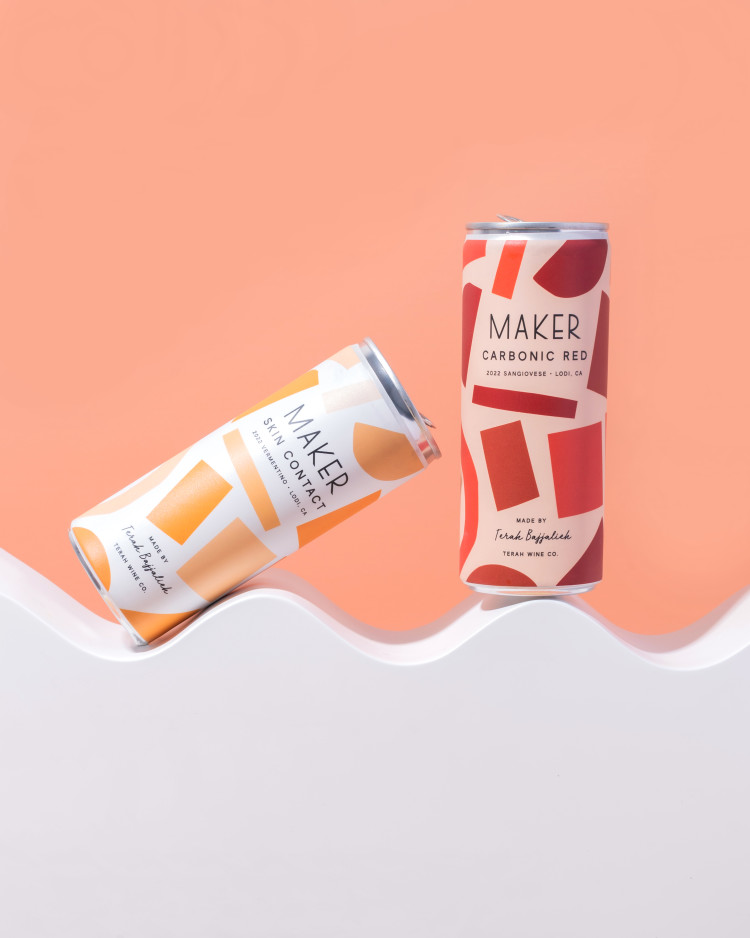
This is our second year canning Albariño. It's a natural wine made without commercial yeast – just premium grapes from sustainably-farmed vineyards. This year's vintage has notes of tropical fruits, white flowers, and citrus. It's the perfect spring or summer sipper but get it soon because it's sure to sell out again.
Our first-ever Orange Vermentino by new-to-Maker winemaker, Terah Bajjalieh, is made with biodynamically farmed grapes, fermented on skin to add that terracotta hue. Expect notes of tropical pineapple, apricot, and Pacific Ocean minerality.
Our third natural wine is another gem from Terah: Carbonic Sangiovese. This wine pairs with it all – pizza, pasta, sweet BBQ, etc. – but is also amazing straight from the can. It’s natural with big flavor and complex aromas thanks to carbonic maceration and its whole cluster fermentation. You’ll taste strawberry, cherry, and something rustic.
All three of Maker's natural wines are members-only, so if there was ever a time to join the Can Club, it's now.
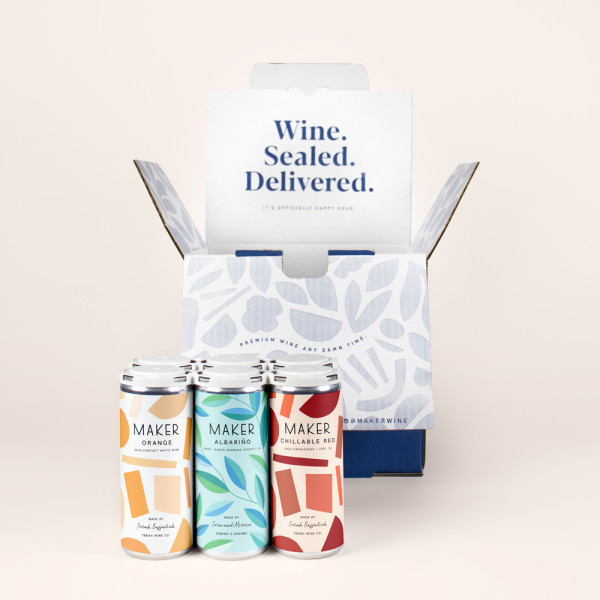
Try our natural wines
Try members-only Albariño, Orange Vermentino, and Carbonic Sangiovese – three very natty, #nofilter kind of wines from independent female winemakers.


Members only
Albariño
6 cans / $54
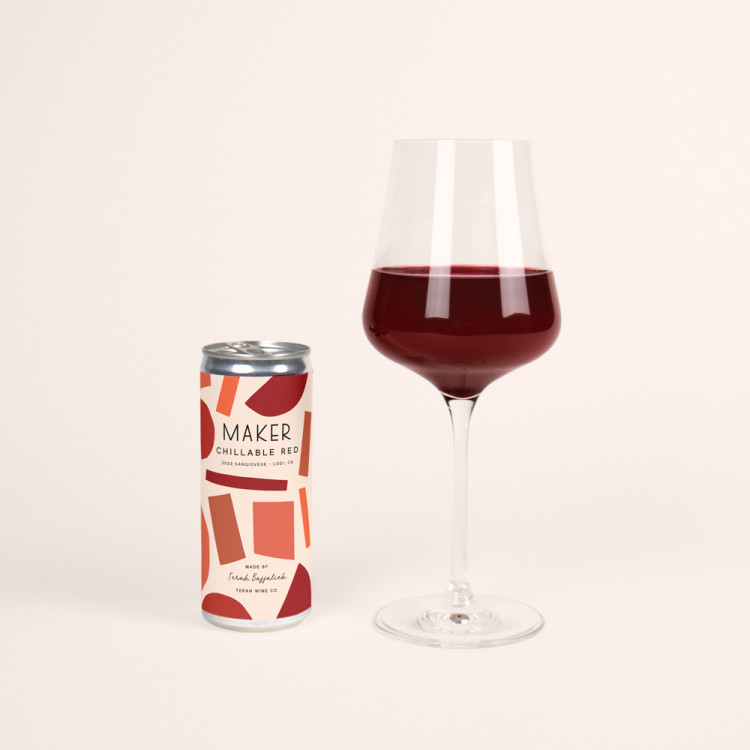

NEW
Chillable Red
6 cans / $60
